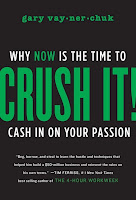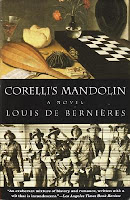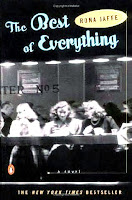 Margaret Atwood’s The Year of the Flood was a slow burn kind of book for me. It took me ages to read, I think I finished five other novels while I was reading this one, but that’s not a comment on how much I enjoyed this book. A companion piece to Oryx and Crake, The Year of the Flood is a wholly satisfying story about a world hit by a waterless flood, and those people within who survive. I may be wrong, but I’d classify the book as speculative fiction — it takes place just far enough in the future to make you second guess how we’re living our lives and treating the earth, but it’s familiar enough not to seem too out there (if that makes any sense).
Margaret Atwood’s The Year of the Flood was a slow burn kind of book for me. It took me ages to read, I think I finished five other novels while I was reading this one, but that’s not a comment on how much I enjoyed this book. A companion piece to Oryx and Crake, The Year of the Flood is a wholly satisfying story about a world hit by a waterless flood, and those people within who survive. I may be wrong, but I’d classify the book as speculative fiction — it takes place just far enough in the future to make you second guess how we’re living our lives and treating the earth, but it’s familiar enough not to seem too out there (if that makes any sense).
The novel moves back and forth between life pre- and post-flood. For a time, the main characters, Toby and Ren, one older, one younger, despite the different ways they arrived, live together in the Gardeners commune, where traditional religion that we’d recognize as Western in its influence mixes with holistic approaches to health, the earth, and life. The Gardeners, lead by Adams and Eves, don’t put chemicals in their bodies, they eat food that they grow, and many of them survive the waterless flood because of these skills.
At first, Toby resists the world of the Gardeners. She’s survived this long by going underground, as dangerous as it is, and becoming a part of a community wasn’t something she thought she needed to do. But slowly, as her skills as a naturalist, a healer, a beekeeper both evolve and are discovered, it’s apparent she’s found a place where she can belong — whether or not she wants to become Eve Six.
Ren, however, doesn’t have it so easy. As a young girl, her mother drags her away from her father’s house — safely ensconced in the highly programmed, chemical world — as a result of an affair she has with one of the key Gardener men. She’s a flake, there’s no getting around it, and when the relationship goes sour, Ren’s dragged back into the sterile world of her father’s people, sent off to university at Martha Graham, and then out into the workforce, perhaps not in the job she would have once imagined for herself in high school. High school and the Gardeners define Ren (oh how this happens for so many people, ahem) and without these key people in her life, she’s a little lost, a little heartbroken (over Jimmy, you’d remember him from the previous book — Snowman). But both Toby and Ren are survivors and their stories, when woven together, are equally compelling.
There’s nothing to do but be in awe of Atwood’s imagination. But if I were to make one slight criticism — I wasn’t as inspired by the “poems” that started off each of the Gardener sections — they seemed a bit contrived to me, but then, when you look through a hymn book in church, the sentiment is much the same, so perhaps I should just take them at face value. It’s a sad book, a book that makes you appreciate the fact that you can still put a seed in the ground and have it grow into a plant that could feed you, the birds, and the butterflies. And one that perhaps sets a new standard for saint-like worship of unconventional heroes, especially those that survive.
READING CHALLENGES: The Year of the Flood is my third book in this year’s Canadian Book Challenge.









